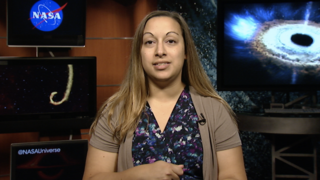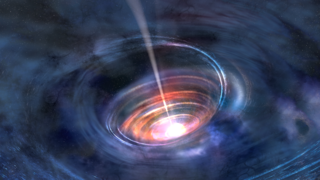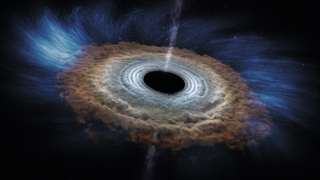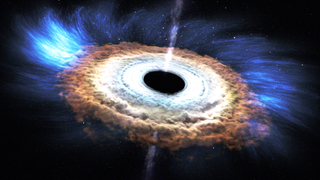NASA's Swift Satellite Spots Black Hole Devouring A Star
Most galaxies, including our own, possess a central supersized black hole weighing millions of times the sun's mass. According to the new studies, the black hole in the galaxy hosting Swift J1644+57 may be twice the mass of the four-million-solar-mass black hole lurking at the center of our own Milky Way galaxy. As a star falls toward a black hole, it is ripped apart by intense tides. The gas is corralled into a disk that swirls around the black hole and becomes rapidly heated to temperatures of millions of degrees.
The innermost gas in the disk spirals toward the black hole, where rapid motion and magnetism creates dual, oppositely directed "funnels" through which some particles may escape. Particle jets driving matter at velocities greater than 80-90 percent the speed of light form along the black hole's spin axis. In the case of Swift J1644+57, one of these jets happened to point straight at Earth.
Theoretical studies of tidally disrupted stars suggested that they would appear as flares at optical and ultraviolet energies. The brightness and energy of a black hole's jet is greatly enhanced when viewed head-on. The phenomenon, called relativistic beaming, explains why Swift J1644+57 was seen at X-ray energies and appeared so strikingly luminous.
When first detected on March 28, the flares were initially assumed to signal a gamma-ray burst, one of the nearly daily short blasts of high-energy radiation often associated with the death of a massive star and the birth of a black hole in the distant universe. But as the emission continued to brighten and flare, astronomers realized that the most plausible explanation was the tidal disruption of a sun-like star seen as beamed emission.

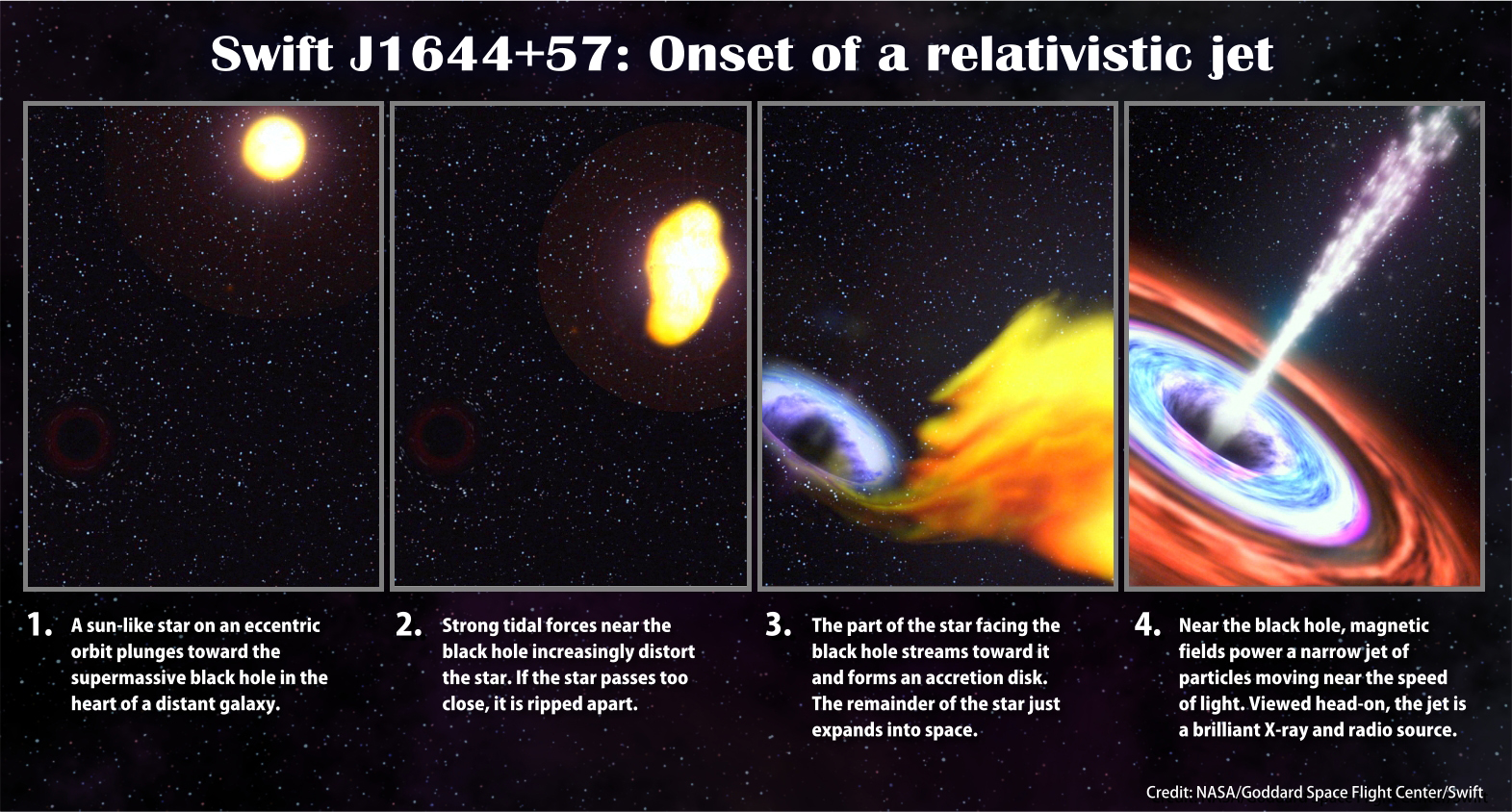
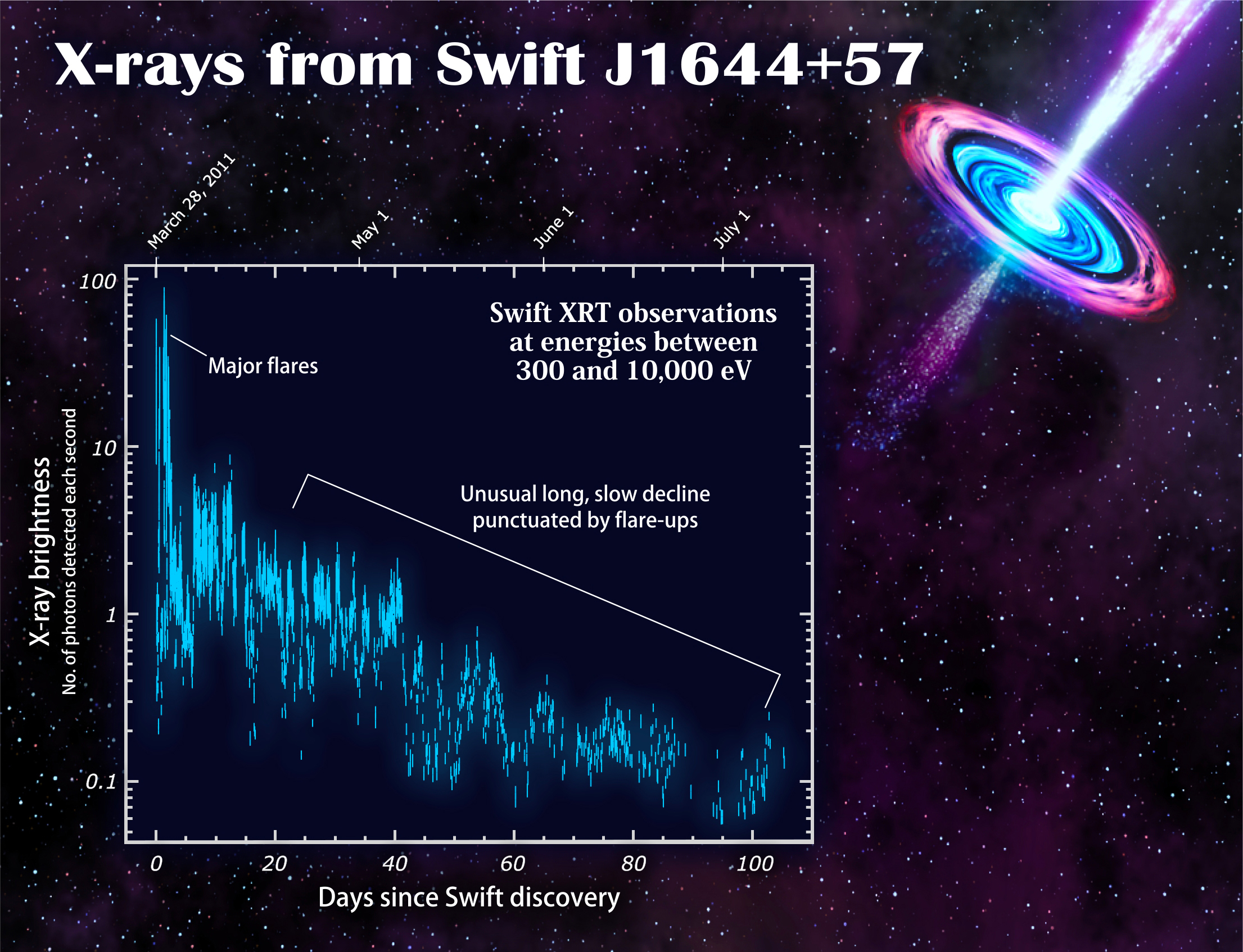
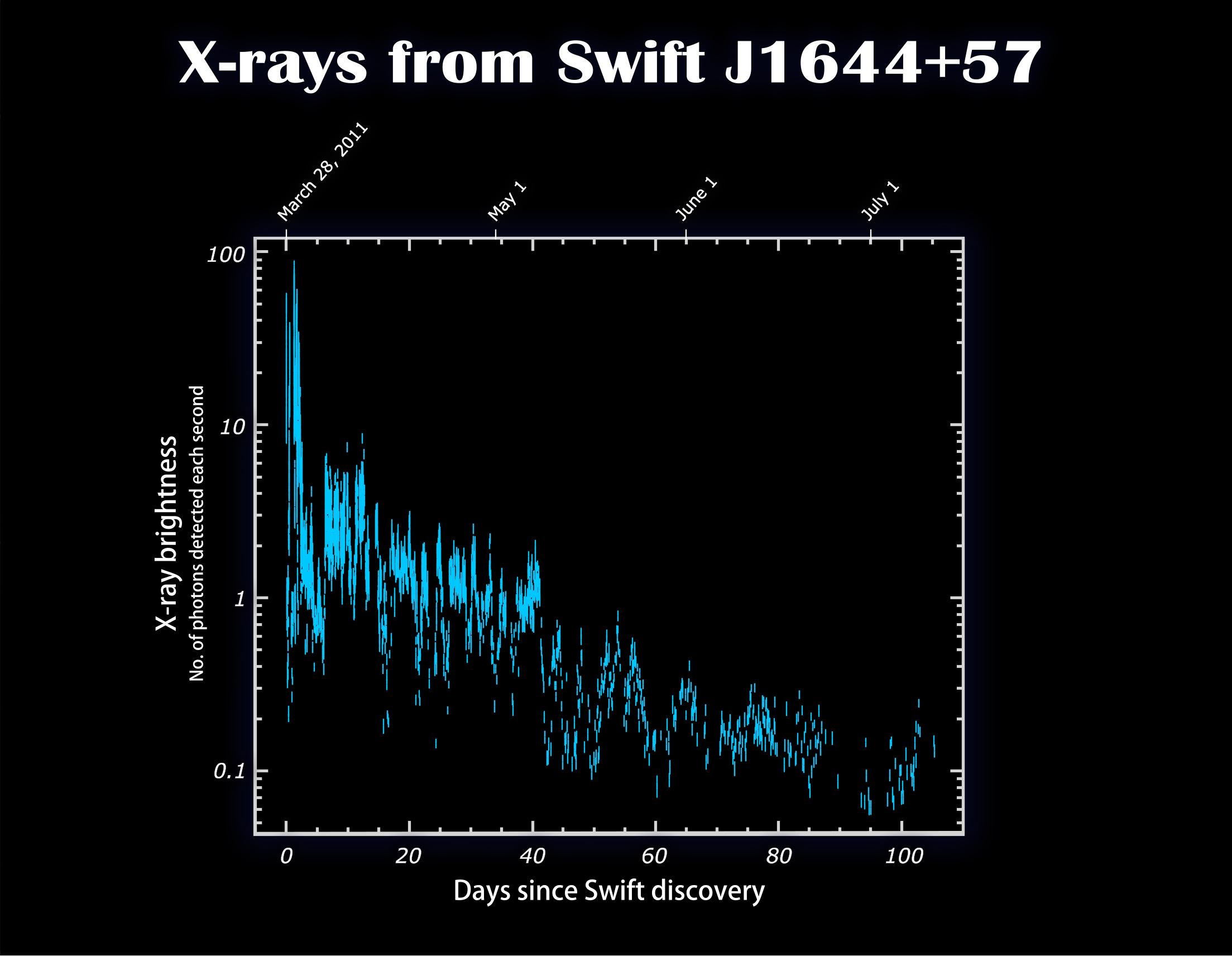
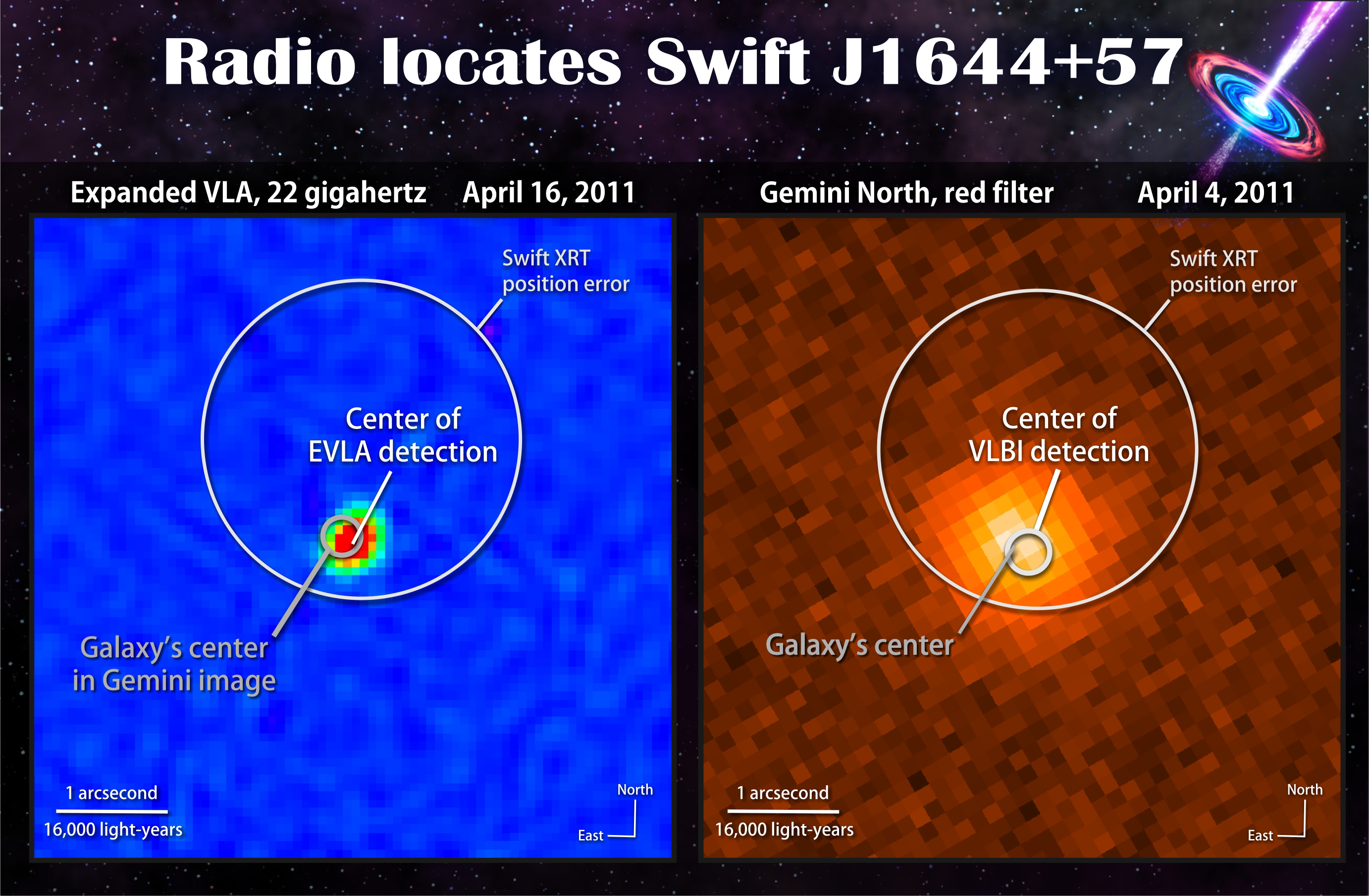

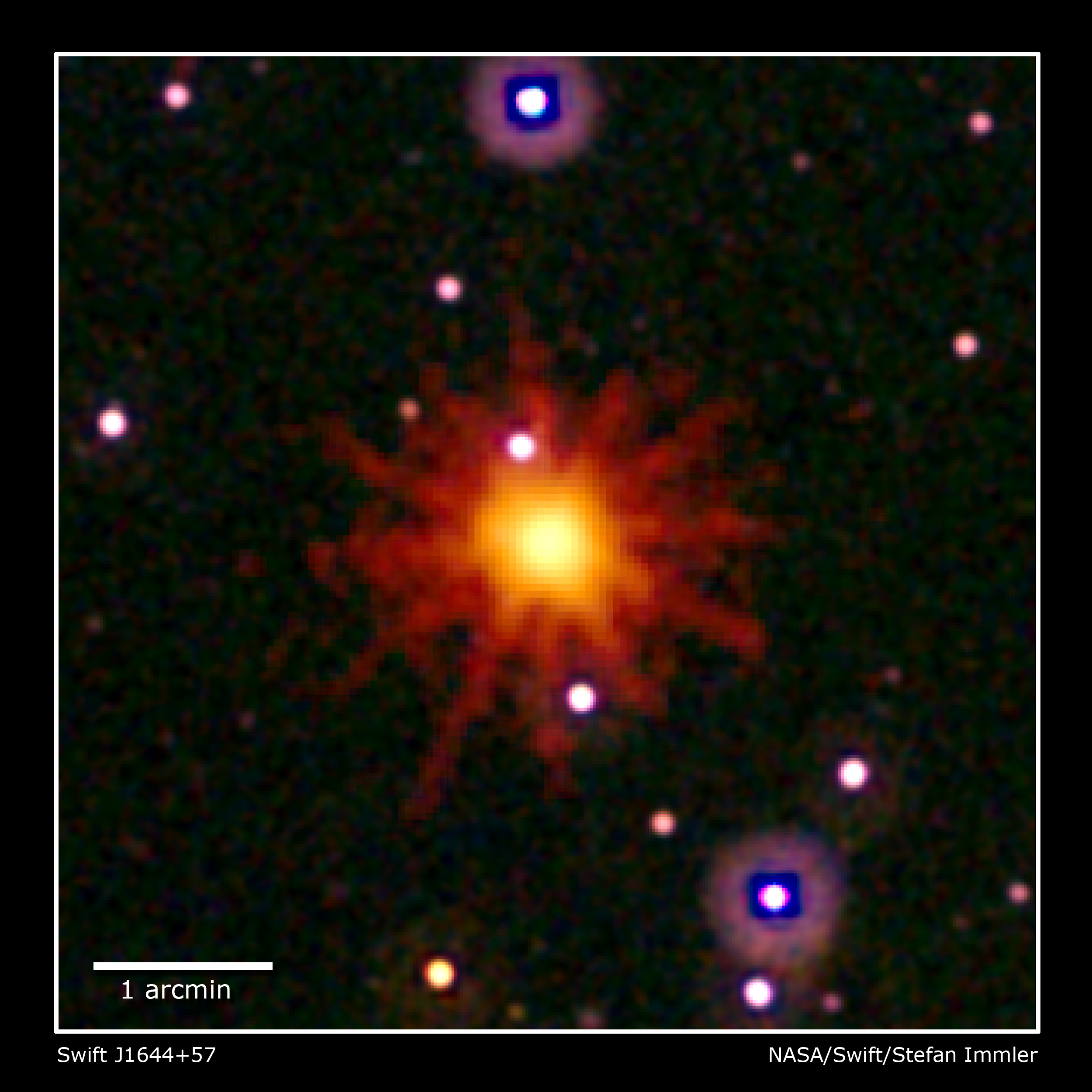


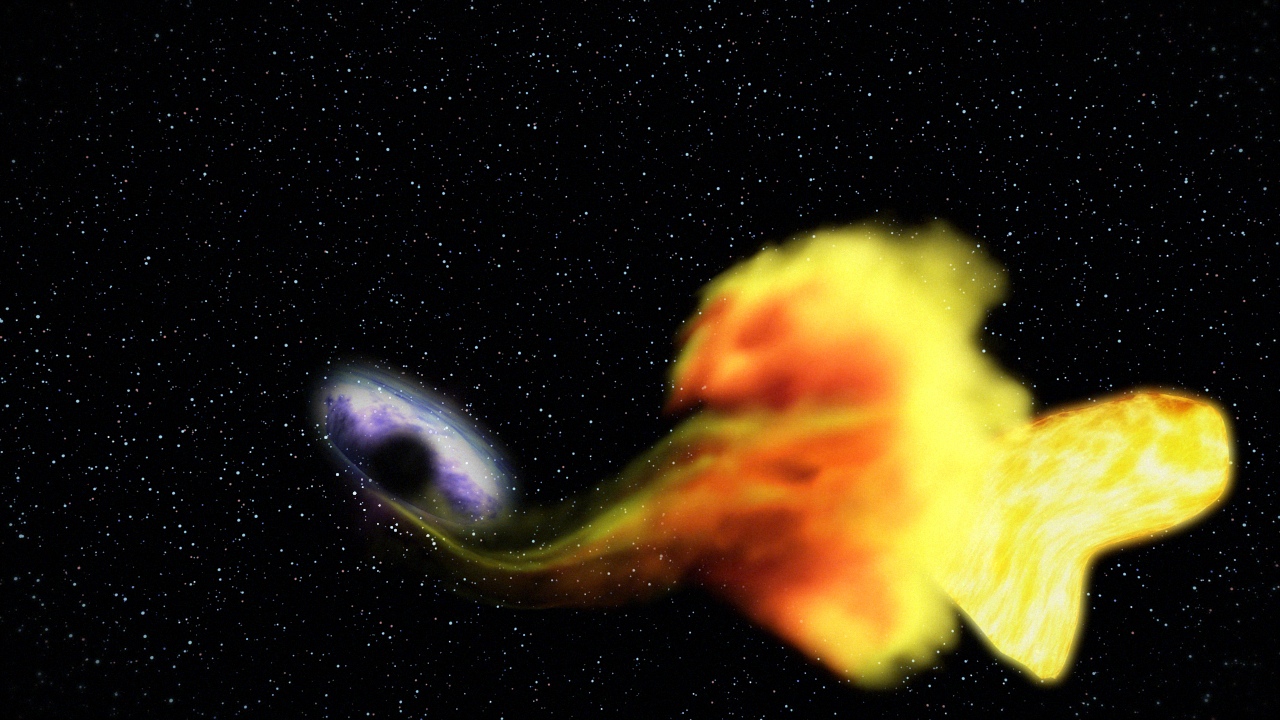
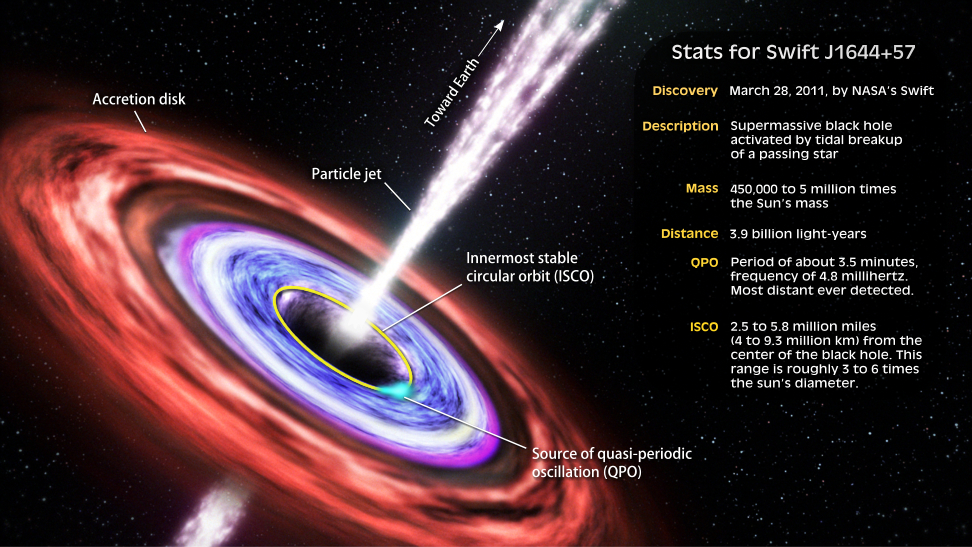
Related
For More Information
http://www.nasa.gov/mission_pages/swift/bursts/devoured-star.html
http://www.nasa.gov/mission_pages/swift/bursts/shredded-star.html
Credits
Scott Wiessinger (UMBC): Producer
Francis Reddy (University of Maryland College Park): Lead Science Writer
Francis Reddy (University of Maryland College Park): Graphics
NASA/Goddard Space Flight Center. However, each element should be credited as indicated above.
https://svs.gsfc.nasa.gov/10807
Mission:
Swift
Data Used: Note: While we identify the data sets used in these visualizations, we do not store any further details nor the data sets themselves on our site.
This item is part of this series:
Narrated Movies
Goddard TV Tape:
G2010-139 -- Various Small Astrophysics projects
Keywords:
SVS >> Galaxy
SVS >> HDTV
SVS >> Satellite
SVS >> X-ray
SVS >> Black Hole
SVS >> Active Galaxy
SVS >> Astrophysics
SVS >> Space
SVS >> Swift
SVS >> Star
SVS >> Active Galactic Nucleus
SVS >> Space Science
NASA Science >> Universe
